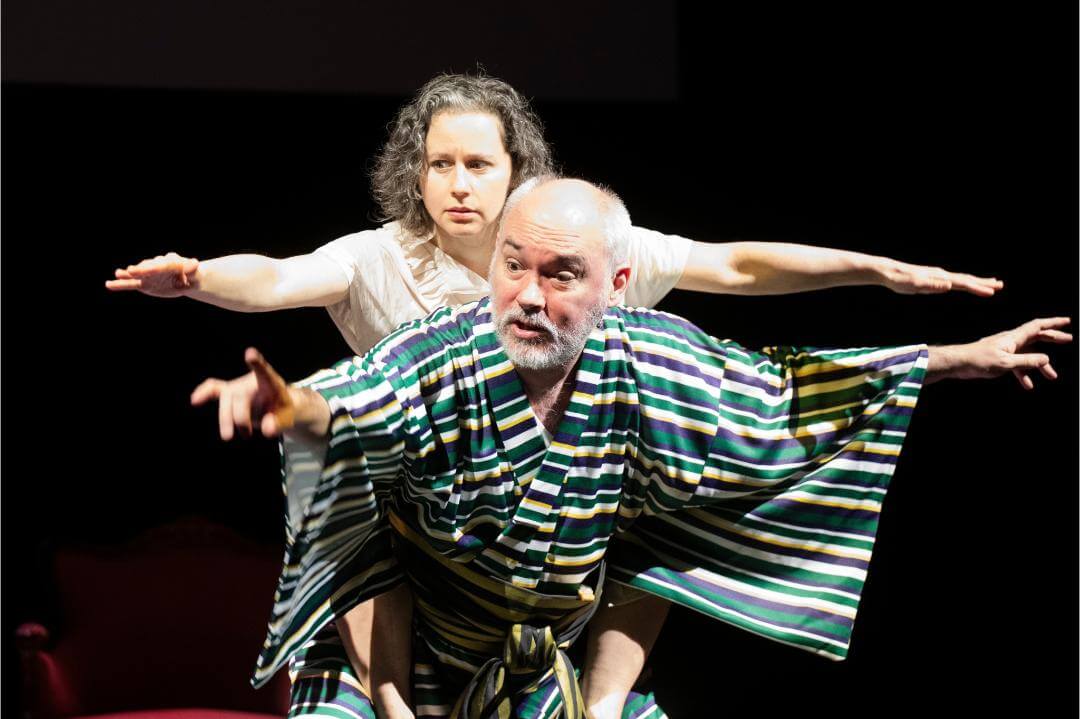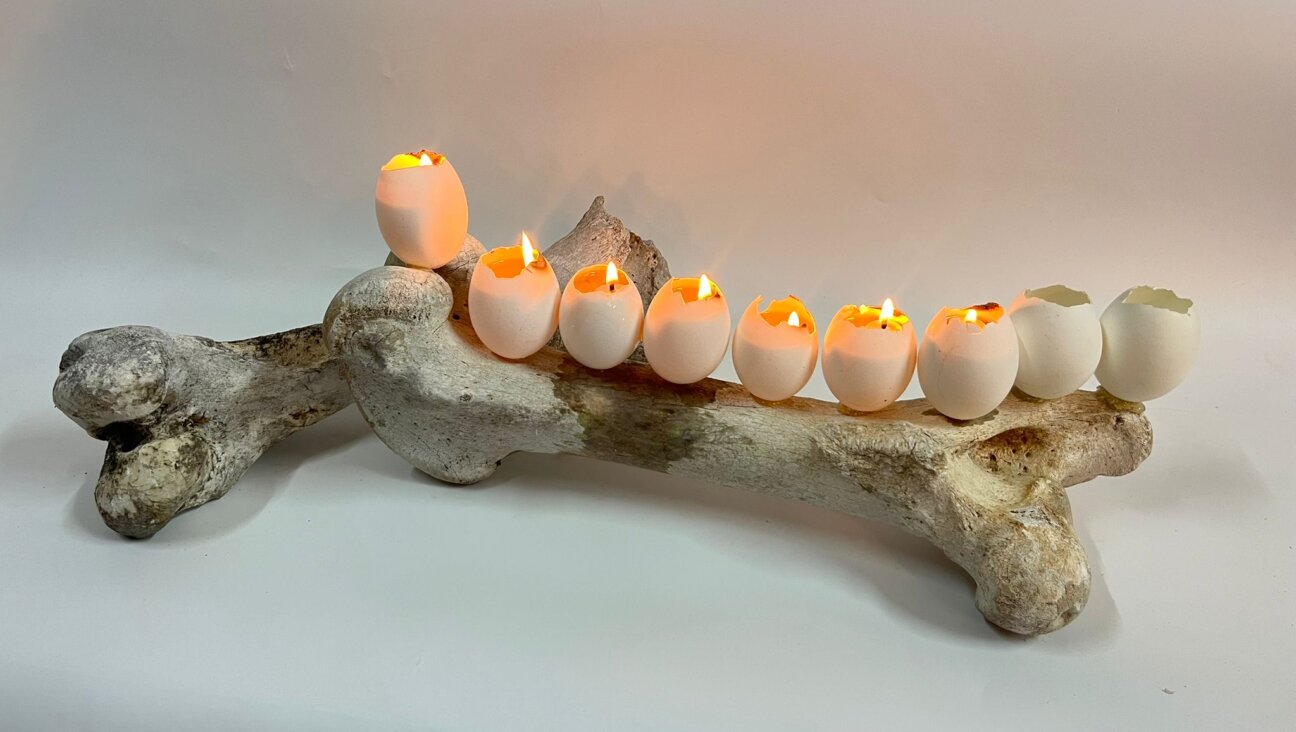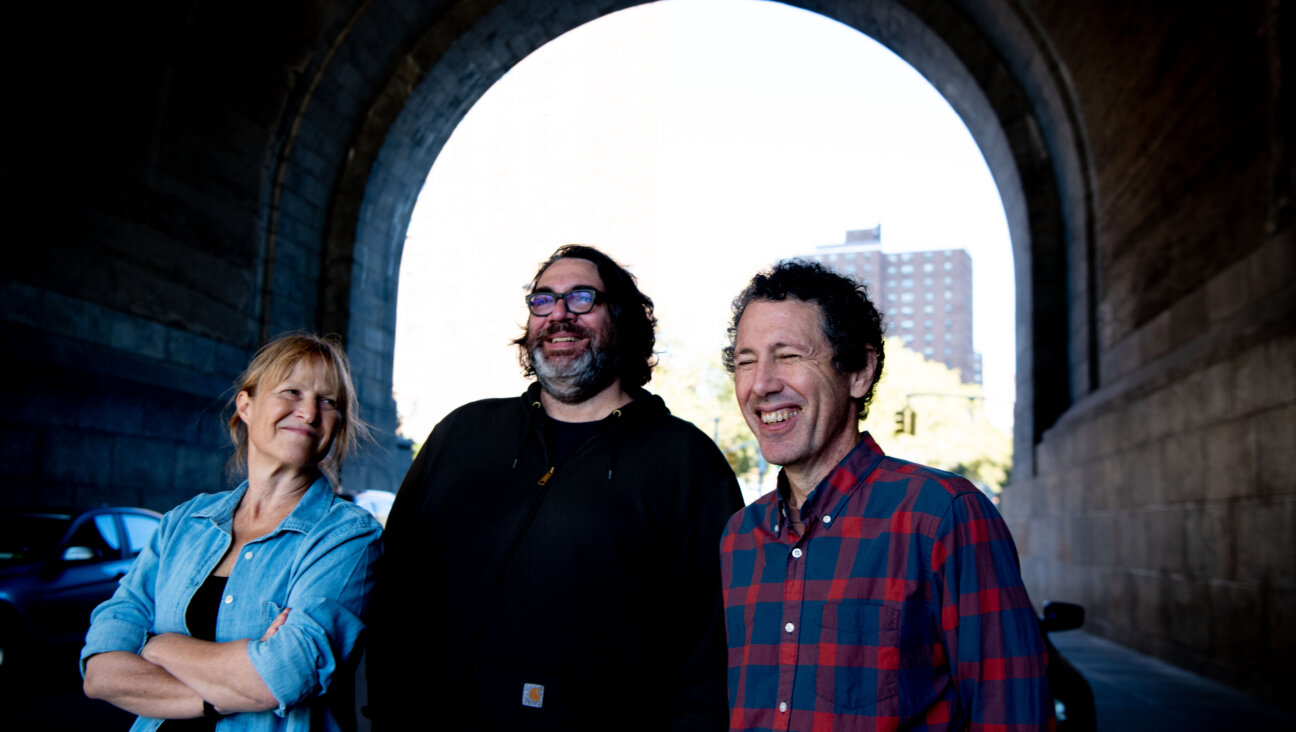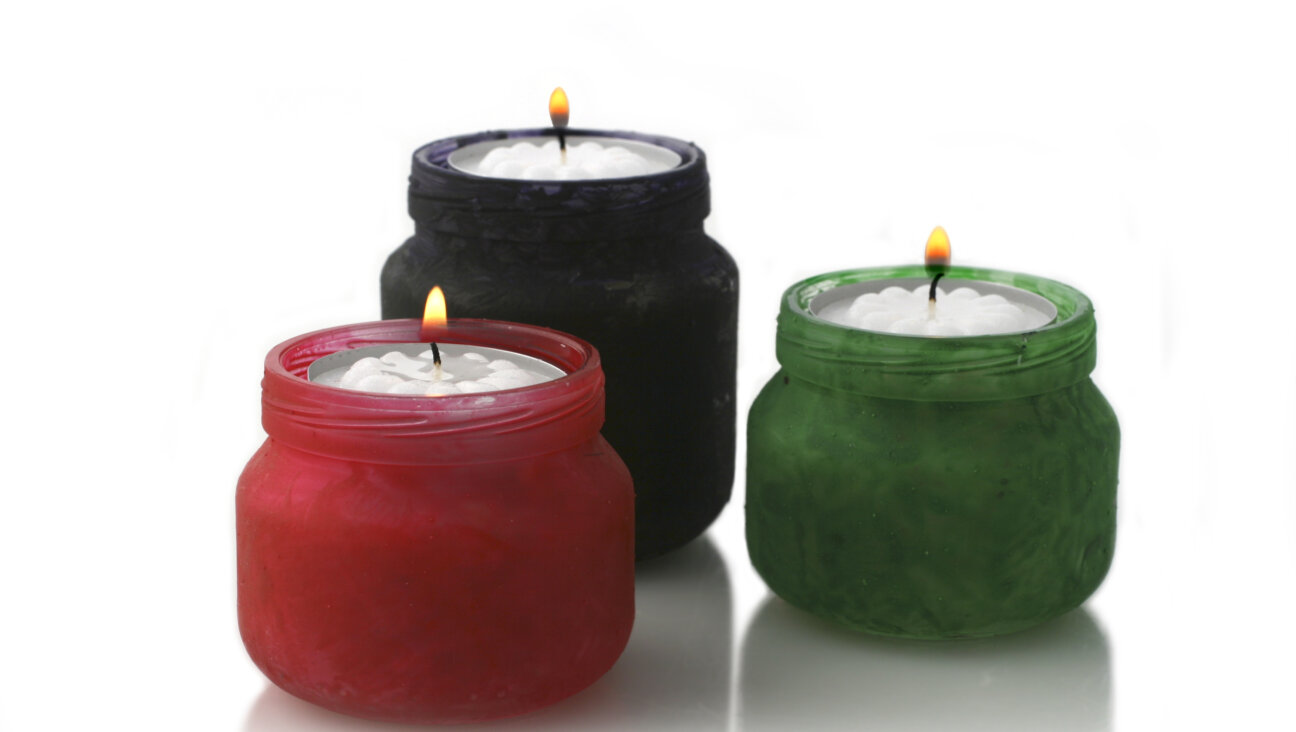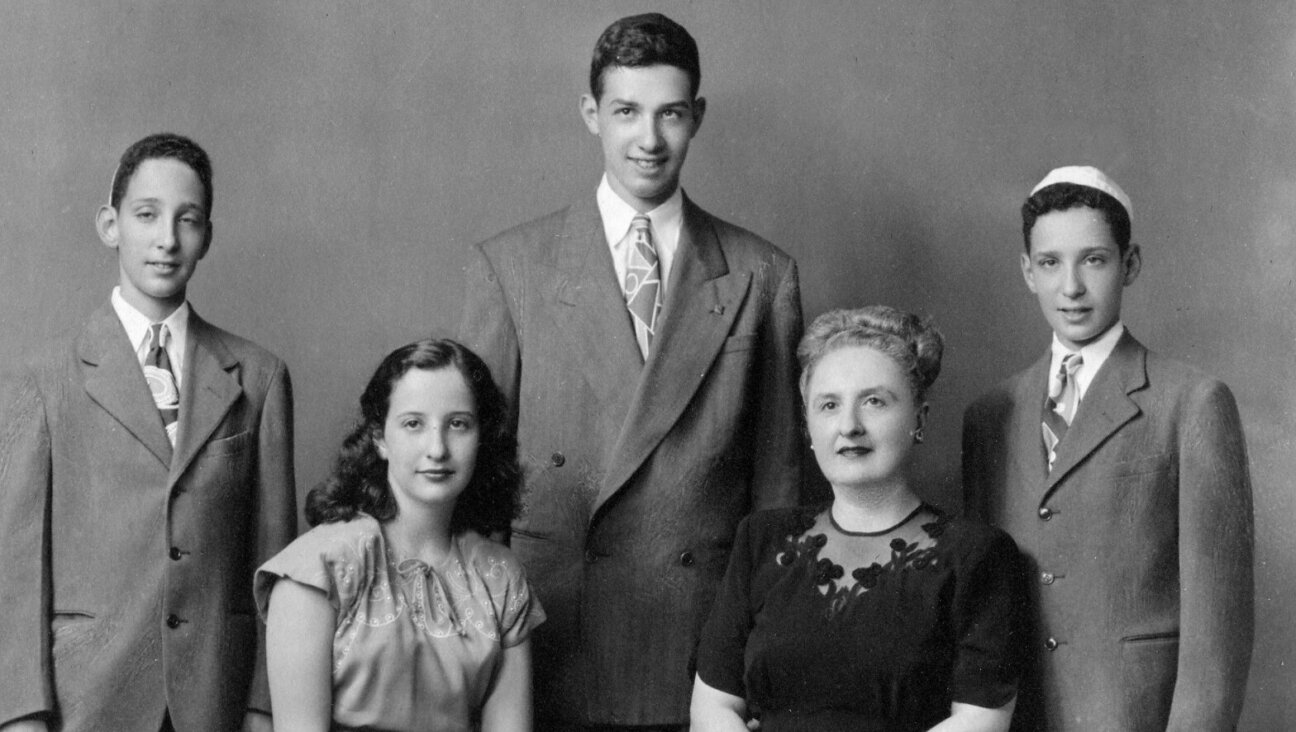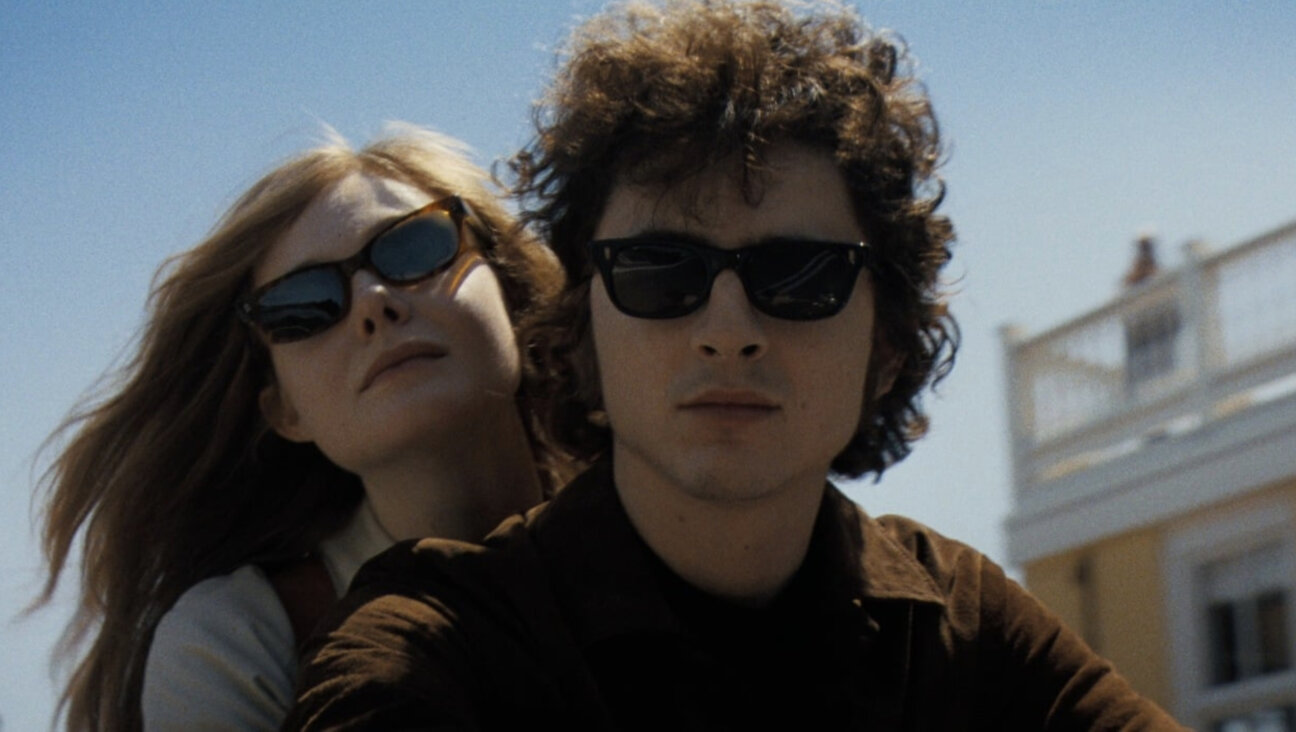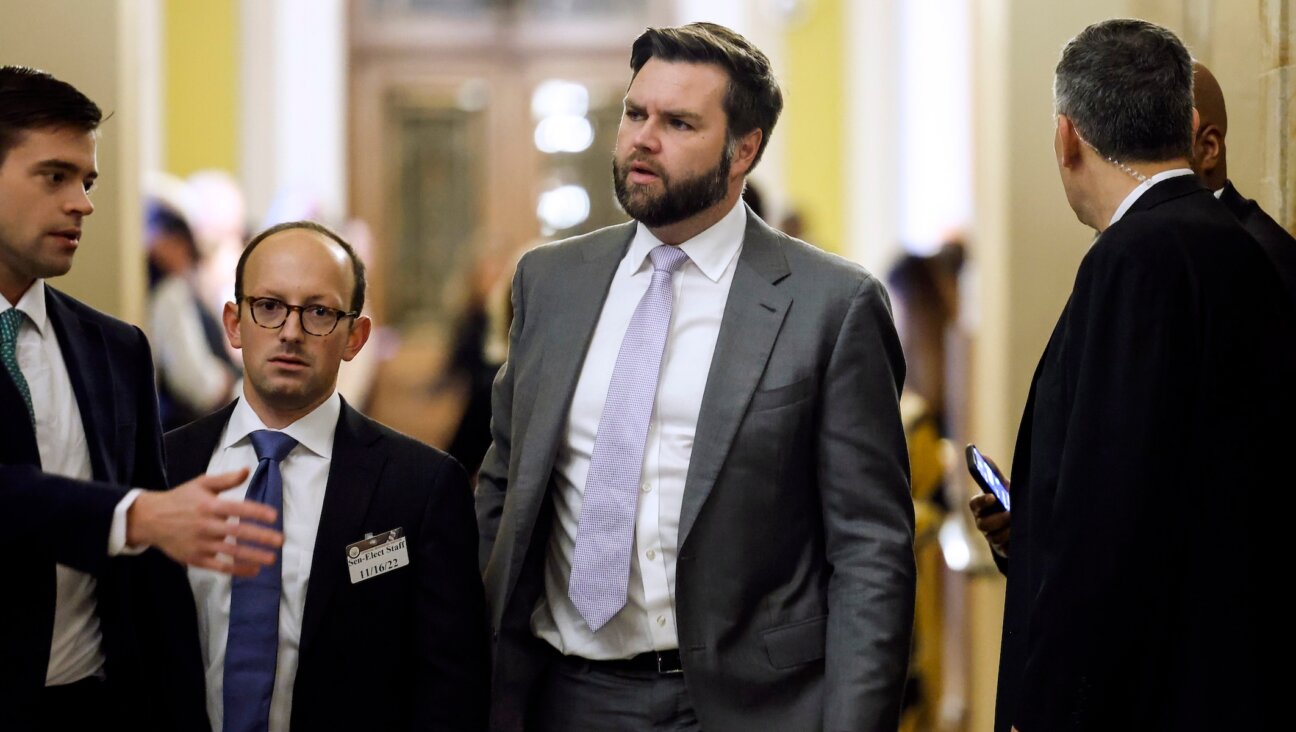Finding Comedy in the Conflict
When choreographer David Dorfman toured with his dance company, he often sought out local rabbis to ask, “Who are the chosen people?” After listening to a thoughtful response, Dorfman’s standard follow-up question was, “Does that mean everyone else is un-chosen?” An obsession with questioning belief systems — and a healthy sense of humor — has led Dorfman to create “Older Testaments,” a new dance that specifically addresses both the divisions between Jews and Arabs and their struggles over land boundaries. The work, set to an original score by Frank London of the Klezmatics, premiered at New York City’s Joyce Theater and will run through June 5.
Dorfman, who looks more like the rotund, jocular owner of a hardware store than like a dancer, gleaned the initial inspiration for the piece when he worked with London on a musical called “The Green Violin,” about Marc Chagall and Soviet Yiddish Theater. The choreographer was inspired by klezmer music’s innate danceability and wanted to explore it further. The question of where klezmer music came from made Dorfman wonder about the origins of Middle Eastern cultures. “When did these people live peaceably together in the valley of Canaan?” Dorfman asked in an interview with the Forward. “How was their music different or similar?”
Working with seven dancers in his company, Dorfman came up with thematic choreographed material and spoken text that posed questions about cultural identity, communication, ownership and the imposition of dogma. But he insisted on retaining a humorous sensibility, even though that might seem antithetical to the Middle East conflict.
“There are monumental studies about this, and I don’t like proving points in dance,” Dorfman said. Instead, he preferred to distill socio-political issues in order to extract insight, including absurdity and humor. “In a divorce, is any of that funny? Of course not — when you’re right in the middle of it,” he said. “But you look at any stand-up comic, and they’re poking fun at our foibles.”
Central to “Older Testaments” is a rolling framework structure with a large glass window that serves intermittently throughout the piece as a partition, a prison, a house, an ivory tower, a podium and a mirror. The work begins with dancer Paul Matteson standing behind the glass window, gesturing in a patriarchal manner, while playing in the background is a recording of jazz balladeer Jimmy Scott singing the theme from “Exodus.” (“To have a black man who sounds like a woman singing a song of liberation and possession I find very poignant,” noted Dorfman.) With all the dancers dressed in black, it’s impossible to distinguish one ethnicity from another. The group choreography employs contact partnering, tackling and hyperkinetic movement, followed by periods of dialogue. One performer asks, “Who are you?” Another answers, “We were here first,” or “We’ve always been here.” In its nonsensical tone, Dorfman said, “it’s almost like a Dr. Seuss thing. The defense is your identity.”
Dorfman, a Chicago native who grew up with “a super-Reform brand of Judaism,” finds killing in the name of religion particularly objectionable. “Can we wake up and have a little bit of feminine perspective and not kill people?” he asked. “If we exaggerate and laugh at ourselves, we might come to some realization of the ridiculousness of holding out on the truth. You can make a truce on a holiday, and the next day go back to slaughter.” Nonetheless, since the birth of his son, Samson, now 4 years old, he admits that his parental protectiveness has made him see gray areas where black and white once existed.
In “Older Testaments,” a number of striking images occur. Books, ostensibly holding sacred text, are used as pillows and then are slid across the stage. At one point, all the dancers remove their black overgarments and place them near the books, creating a stage picture reminiscent of photographs of slain worshippers. Then the performers aim the books, “Three Stooges”-style, beating one another on the head.
Near the end, dancers flood the stage, ecstatically reaffirming the energy of the klezmer score, which was orchestrated for a four-piece live brass band. Then they jam themselves into the glass structure, which is now fitted with a roof to resemble a house. One by one they exit the house through a tiny door, conveying to the audience a sense of final liberation.
David Dorfman Dance celebrates its 20th anniversary this year. Refreshingly, Dorfman exhibits an exhilaration and joy about his work unusual for a modern dance choreographer who has toughed out his career in New York. (Perhaps this is because of the fact that he has moved his headquarters to Connecticut College, where he is an associate dance professor.) What would he like more than anything for the audience to take away from this work? What is the thing he would most like the audience to take away from his work? “Literally, I would like each audience member to have an immeasurable desire to embrace the person next to him,” Dorfman said without a trace of irony. “Even though there are tons of atrocities happening as we speak, I think there are seeds of a larger understanding of the other. I want to know how we can take little-bitty steps to ensure a little more kindness in the world.”
Joseph Carman is the author of “Round About the Ballet” (Limelight Editions, 2004).
A message from our Publisher & CEO Rachel Fishman Feddersen

I hope you appreciated this article. Before you go, I’d like to ask you to please support the Forward’s award-winning, nonprofit journalism during this critical time.
We’ve set a goal to raise $260,000 by December 31. That’s an ambitious goal, but one that will give us the resources we need to invest in the high quality news, opinion, analysis and cultural coverage that isn’t available anywhere else.
If you feel inspired to make an impact, now is the time to give something back. Join us as a member at your most generous level.
— Rachel Fishman Feddersen, Publisher and CEO








